Romania houses one of the renowned castles, Bran Castle, which is famous for being the residence of the grotesque ruler Vlad Tepes, known as Vlad the Impaler. Vlad, the son of Vlad Dracul, inspired the character of Dracula in our culture. To delve into the fascinating history of this notorious fortress, you can explore a captivating account here.
However, Bran Castle is not the sole castle in Romania; there are numerous others, each possessing their own remarkable allure. Let’s take a closer look at these architectural marvels, showcasing diverse styles such as fortress and ornate palace designs.
1. The Sturdza Palace in Iasi, Romania:
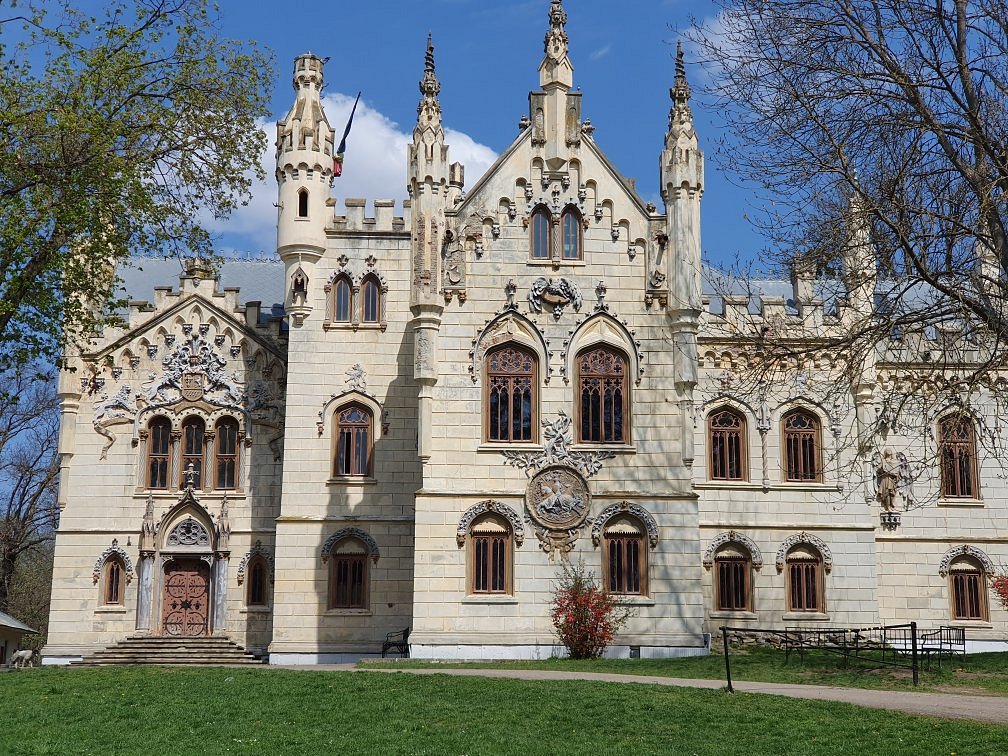
Located in the City of Iasi, Romania, the Sturdza Palace stands as a historic monument in the village of Miclăușeni. Treasurer Simon Stroici constructed this palace in the 16th century, passing it on to Lupul Prăjăscu through his last will and testament. As Lupul Prăjăscu’s lineage ended without heirs, the Sturdza brothers took ownership of the palace, subsequently reconstructing it in the 18th century.
Facts about the Sturdza Castle:
– Where: City of Iasi, Romania
– When: 16th Century
– Builder: Simon Stroici
– Style: Gothic style
– Current Status: Architectural Monument of National Interest
– Present Owner: Metropolis of Moldavia and Bukovina
2. Râșnov Fortress in Brașov County, Romania:

Situated in Râșnov, Brașov County, the Râșnov Fortress stands as a historic monument and significant landmark in Romania. It was constructed in the 13th century, believed to have been ordered by the Teutonic Knights during their rule in Burzenland. The fortress endured its first siege by an Ottoman army in 1421 and was eventually conquered during the reign of Prince Gabriel Báthory in 1612. Due to its vulnerability caused by a lack of water, a secret spring was discovered by the enemy, leading to the fortress’s downfall. To address this weakness, a deep well was subsequently dug between 1623 and 1642 by two Turkish prisoners who were granted their freedom in return.
Facts about the Rasnov Castle:
– Where: Brașov County, Romania
– When: 13th Century
– Builder: Unknown
– Style: Architectonic style
– Current Status: Historic monument and landmark
– Present Owner: Government of Râşnov, Romania
3. Pelișor Castle in Sinaia, Romania:

Commissioned by King Carol I, the Pelișor Castle was constructed between 1899 and 1902 to serve as the residence for his nephew and future King Ferdinand, along with Queen Marie. Designed by the Czech architect Karel Liman, the castle embodies the Art Nouveau style, infused with Queen Marie’s Byzantine and Celtic influences. King Michael I of Romania expressed that Pelișor should remain a private residence for the royal family.
Facts about the Pelisor Castle:
– Where: Sinaia, Romania
– When: 1899-1902
– Builder: King Carol I for the future King Ferdinand
– Style: Art Nouveau style (Combination of Byzantine and Celtic elements)
– Current Status: Private residence
– Present Owner: King Michael I of Romania
4. The Peleș Castle in Prahova County, Romania:

Spanning from 1873 to 1914, the construction of the Peleș Castle in Prahova County was initiated under the patronage of King Carol I. This splendid castle exemplifies the Neo-Renaissance style and experienced a temporary halt during the Romanian War of Independence against the Ottoman Empire from 1877 to 1878. Nonetheless, the construction swiftly resumed in subsequent years.
Facts about the Peles Castle:
– Where: Sinaia, Romania
– When: 1873-1914
– Builder: King Carol I
– Style: Neo-Renaissance style
– Current Status: National Museum
– Present Owner: Princess Margareta
5. Miclauseni Castle in Iasi, Romania:
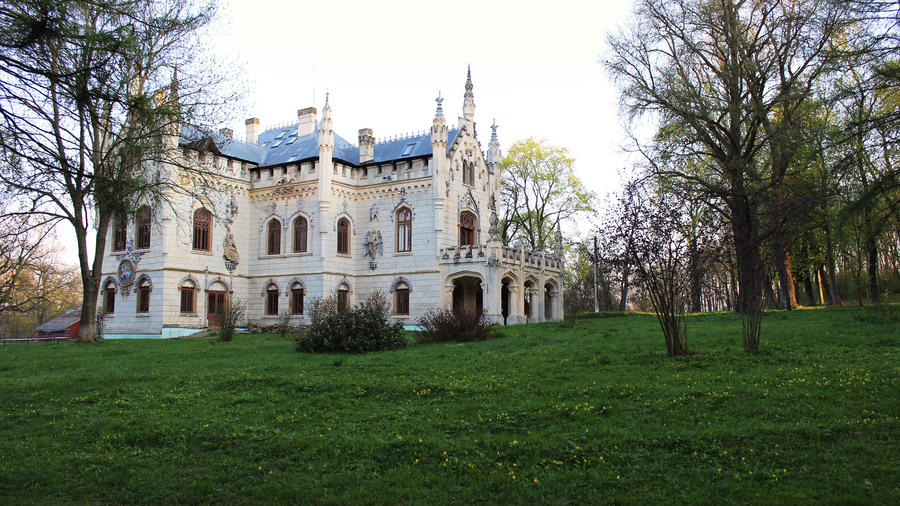
Also known as the Sturdza Palace, the Miclauseni Castle is recognized as a historic monument in the village of Miclăușeni within the City of Iasi, Romania. Treasurer Simon Stroici erected this castle in the 16th century, passing it on to Lupul Prăjăscu through his last will and testament. As Lupul Prăjăscu’s lineage ended without heirs, the Sturdza brothers acquired the castle and subsequently reconstructed the palace in the 18th century.
Facts about the Miclauseni Castle:
– Where: City of Iasi, Romania
– When: 16th Century
– Builder: Simon Stroici
– Style: Gothic style
– Current Status: Architectural Monument of National Interest
– Present Owner: Metropolis of Moldavia and Bukovina
6. The Huniazilor Castle in Transylvania, Romania:
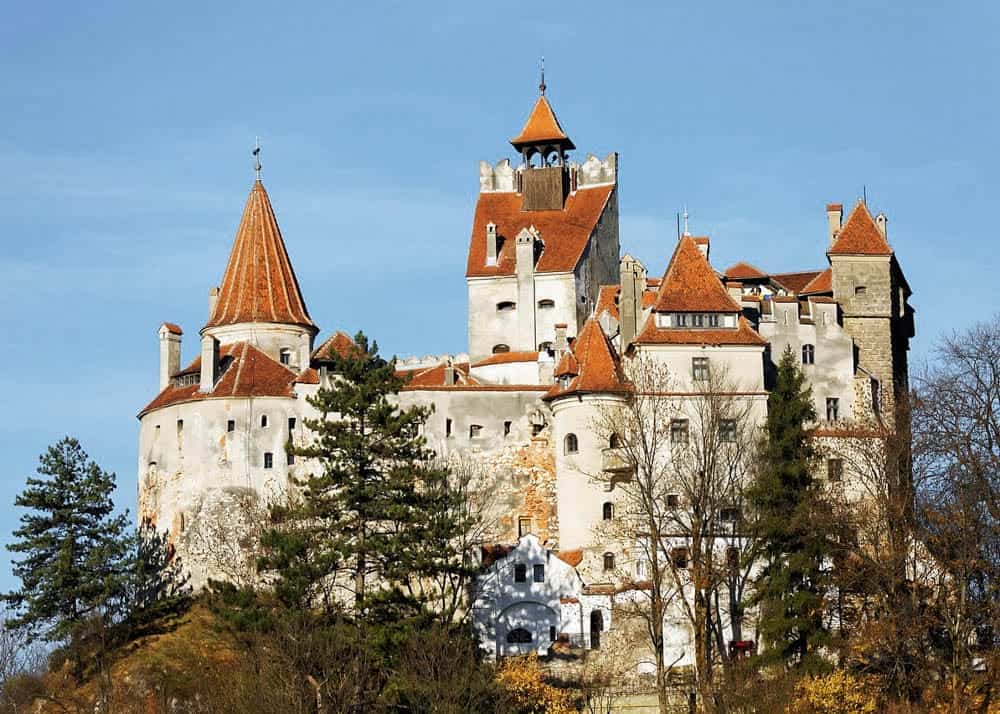
Also known as Corvin Castle, the Huniazilor Castle ranks among the largest castles in Europe and is listed as one of the Seven Wonders of Romania. Its construction commenced in the 14th century under the orders of Voivode John Hunyadi, who ruled over Transylvania. The castle showcases an enchanting blend of Renaissance and Gothic architectural styles, with its restoration now showcasing its stunning grandeur.
Facts about the Huniazilor Castle:
– Where: Hunedoara, Transylvania, Romania
– When: 14th century
– Builder: Voivode John Hunyadi of Transylvania
– Style: Renaissance-Gothic style
– Current Status: Seven Wonders of Romania
– Present Owner: Ministry of Culture
7. The Făgăraș Fortress in Transylvania, Romania:

Considered one of the strongest fortifications in Transylvania, the Făgăraș Fortress was erected in 1310 on the site of a former wooden fortress from the 12th century. Throughout the years, the fortress served primarily as a residence for various princes and their families. Transylvanian Prince Gabriel Bethlen, captivated by the beauty of Italian Renaissance, brought architects and glassmakers from Italy to rebuild the fortress. Presently, the Făgăraș Fortress stands well-preserved, housing the Fagaras County Museum.
Facts about the Făgăraș Fortress:
– Where: Transylvania, Romania
– When: 13th century
– Builder: Transylvanian Prince Gabriel Bethlen
– Style: Italian Renaissance
– Current Status: Fagaras County Museum
– Present Owner: Government of Transylvania
8. The Palace of Culture in Iași, Romania:

The Palace of Culture, located in Iași, Romania, is a registered National Historic Monument. It serves as the home of the Cultural Heritage Conservation-Restoration Centre, hosting a wide array of exhibitions and events. Architect Ion D. Berindei completed the construction of this palace in 1925, following the Neo-Gothic style.
Facts about the Iași Cultural Palace:
– Where: Iași, Romania
– When: 1925
– Builder: Ion D. Berindei
– Style: Neo-Gothic style
– Current Status: National Register of Historic Monuments / Cultural Heritage Conservation-Restoration Centre
– Present Owner: City of Iași
9. The Hunyadi Castle in Transylvania, Romania:

Also referred to as Corvin Castle, the Hunyadi Castle is a magnificent fortress that ranks among the largest castles in Europe. It is recognized as one of the Seven Wonders of Romania. Construction began in the 14th century under the orders of Voivode John Hunyadi of Transylvania, embracing the Renaissance-Gothic architectural style. Over the centuries, the castle underwent four phases of construction before being beautifully restored.
Facts about the Hunyadi Castle:
– Where: Hunedoara, Transylvania, Romania
– When: 14th century
– Builder: Voivode John Hunyadi of Transylvania
– Style: Renaissance-Gothic style
– Current Status: Seven Wonders of Romania
– Present Owner: Ministry of Culture
10. Cantacuzino Castle in Transylvania, Romania:
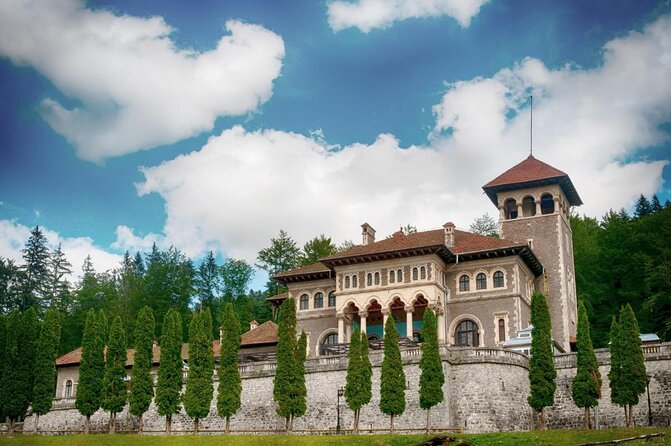
Nestled in Bușteni, the Cantacuzino Castle showcases captivating Neo-Romanian architecture. It was erected in the early 20th century under the supervision of architect Gregory Cerchez, commissioned by Prince George Grigore Cantacuzino. The castle remained in the possession of the Cantacuzino family until it was forcefully nationalized in 1948, subsequently serving as a preventorium for the Ministry of Internal Affairs. Following the family’s reclaiming of the castle after 1989, it was later sold to private investors in 2004. The castle underwent restoration and is now open to the public.
Facts about the Cantacuzino Castle:
– Where: Bușteni, Transylvania, Romania
– When: 1911
– Builder: Architect Gregory Cerchez for Prince George Grigore Cantacuzino
– Style: Neo-Romanian style
– Current Status: Open to the public
– Present Owner: Private owners
11. Bran Castle in Transylvania, Romania:

Widely known as Dracula’s Castle, Bran Castle is a national monument and iconic landmark in Romania. Its construction dates back to the early 13th century when it was built by the Teutonic Order as a fortified position in the Burzenland region. The castle gained popularity due to Bram Stoker’s Gothic novel featuring the character of Count Dracula, a Transylvanian figure with a castle perched high above a valley. The association between Dracula and the castle stems from Stoker’s description, which closely matches the features of Bran Castle among all the castles in Transylvania.
Facts about the Bran Castle:
– Where: Bran, Transylvania, Romania
– When: 13th century
– Builder: Teutonic Order
– Style: Medieval architecture
– Current Status: Museum dedicated to displaying art and furniture collected by Queen Marie
– Present Owner: Archduke Dominic, Archduchess Maria Magdalena, and Archduchess Elisabeth
12. Bánffy Castle in Bonţida, Romania:
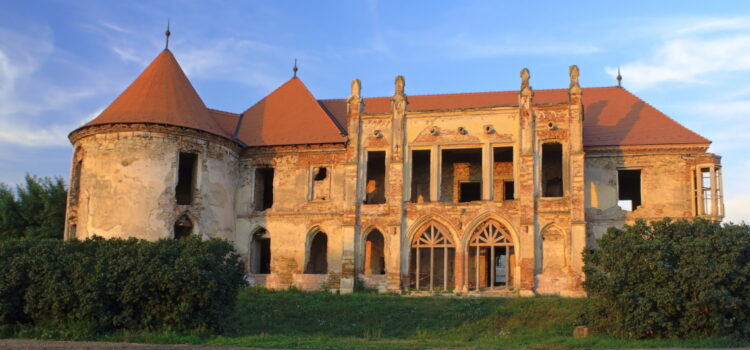
Situated in Bonţida, the Bánffy Castle stands as an architectural monument, boasting an exquisite blend of Renaissance, Baroque, Neoclassical, and Neo-Gothic styles. Its history dates back to the late 14th century when it became the property of the Hungarian Bánffy family of Lonsonc, granted by Sigismund of Luxemburg to Dénes, son of Tamás Losonci. Presently, the castle is owned by Katalin Bánffy, a descendant of the Bánffy family.
Facts about the Bánffy Castle:
– Where: Bonţida, Romania
– When: 14th century
– Builder: Unknown
– Style: Baroque architecture
– Current Status: Historic monument
– Present Owner: Katalin Bánffy